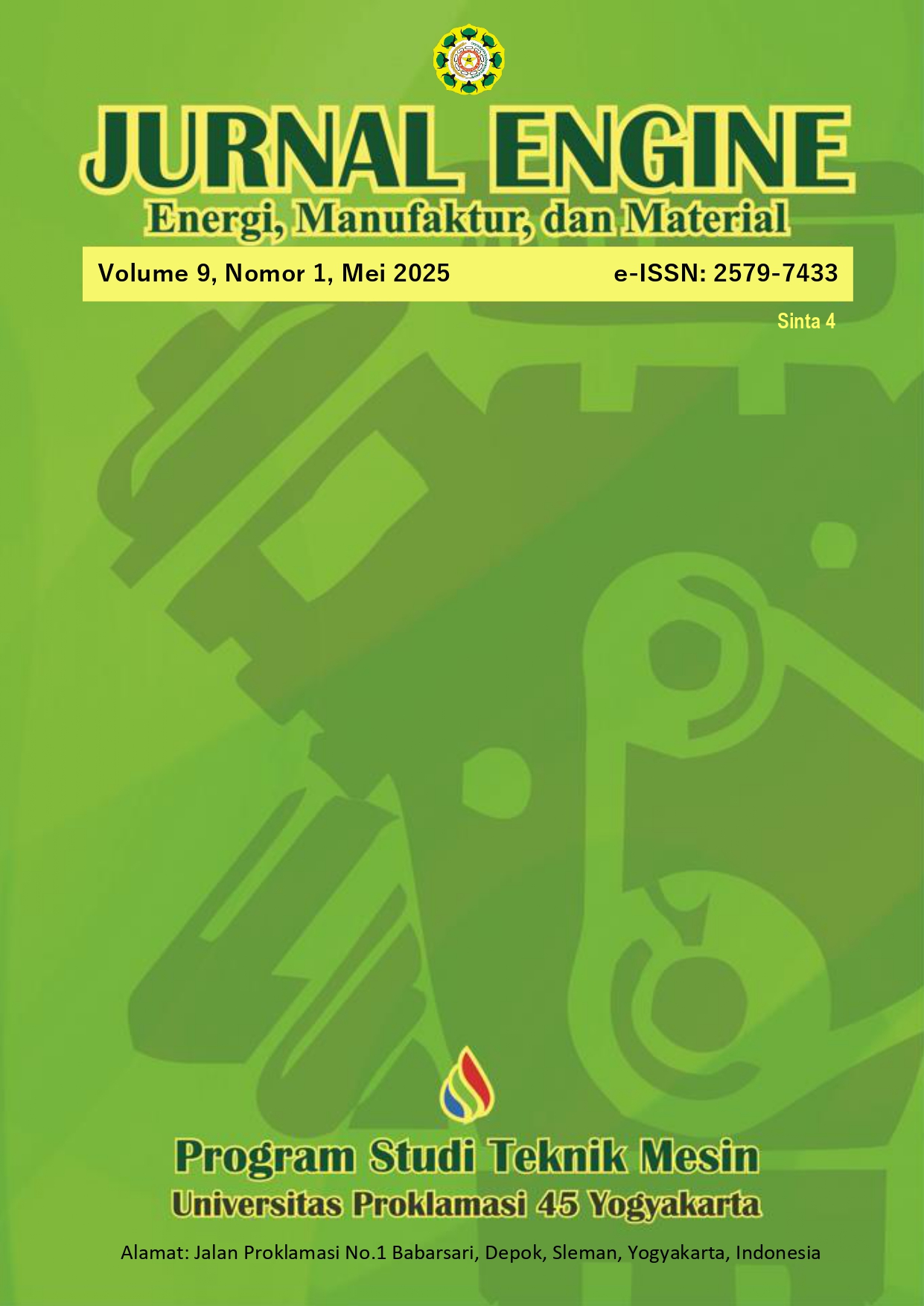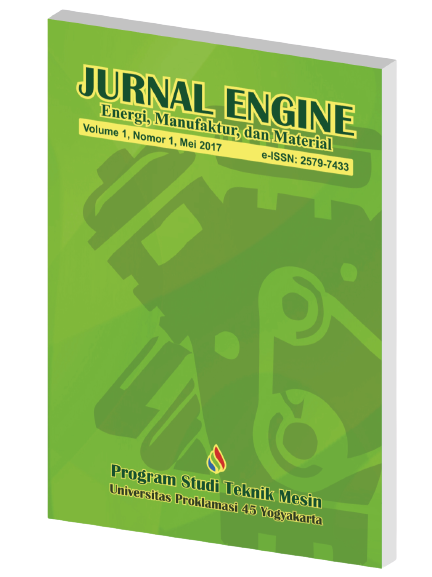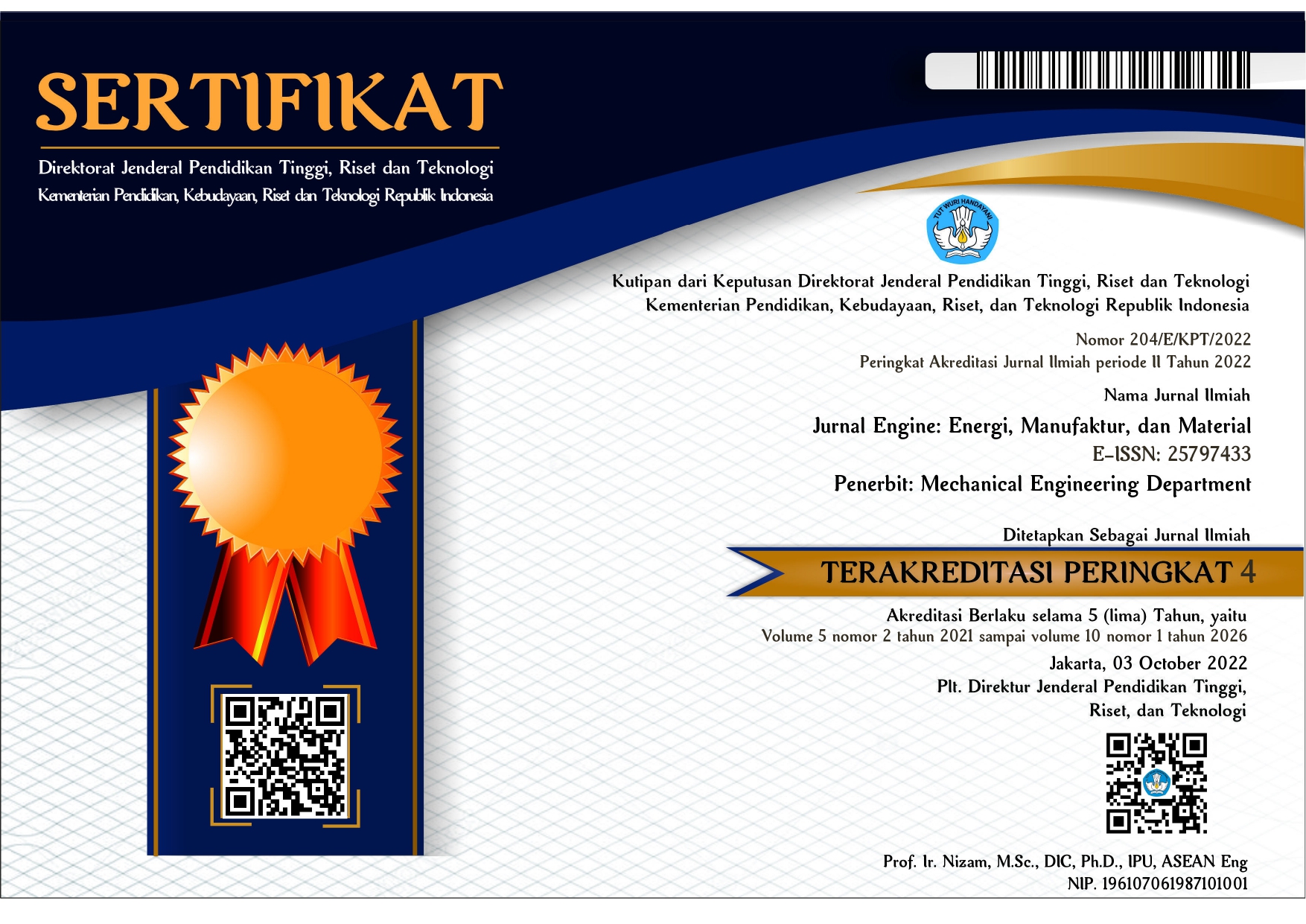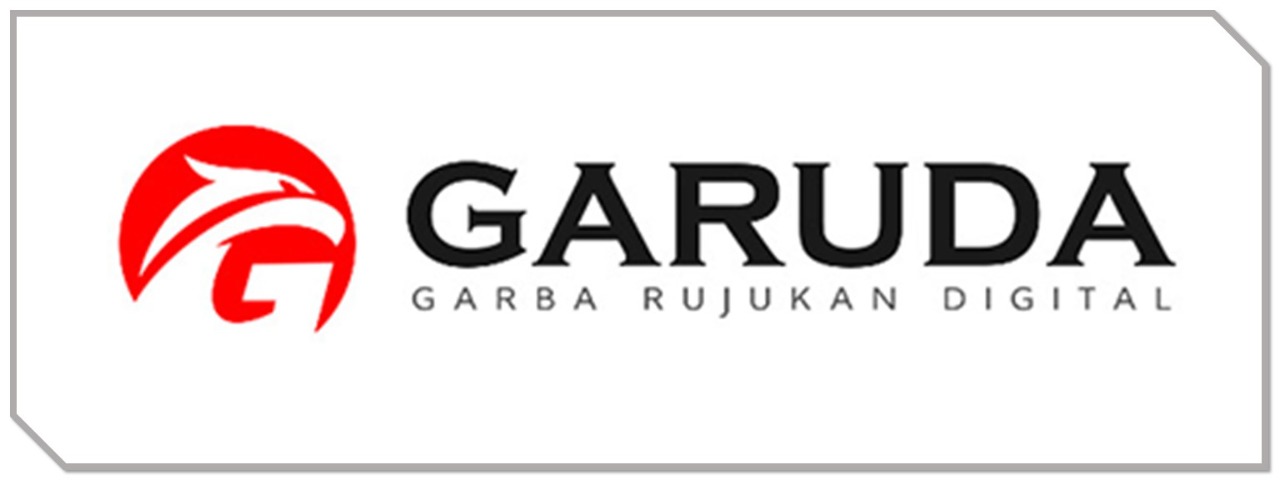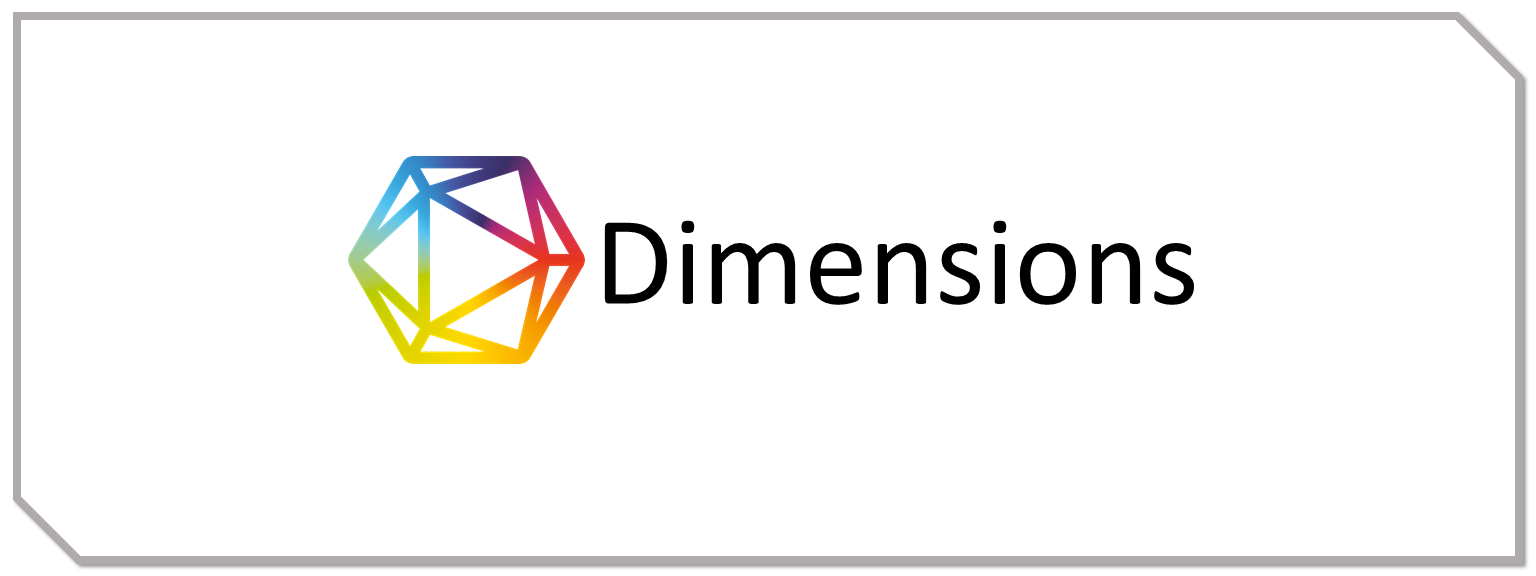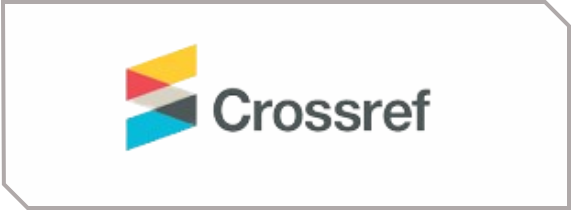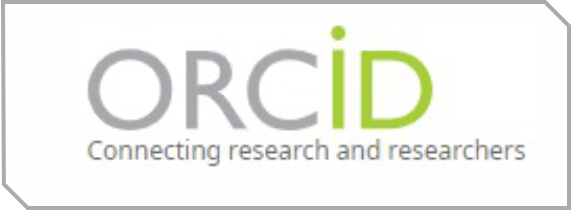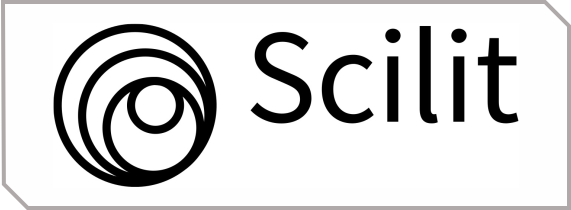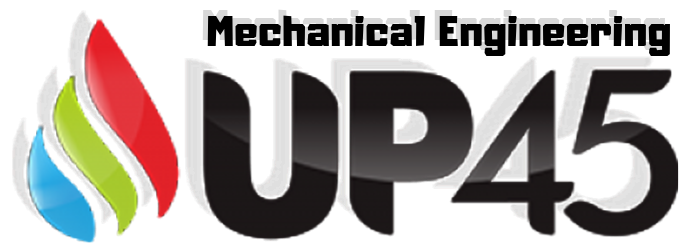Studi Pengaruh Variasi Partikel Shotpeening terhadap Struktur Mikro dan Sifat Mekanis pada Aluminium Paduan
DOI:
https://doi.org/10.30588/jeemm.v9i1.2189Keywords:
Aluminum, friction stir welding, shotpeening, tensile strength, impact strengthAbstract
The objective of this research is to find out the effect of shotpeening particle variations on the microstructure, tensile strength, and impact strength of friction stir welding (FSW) joints. In the weld metal area after the material is subjected to friction stir welding (FSW), the material will experience softening and a decrease in mechanical properties compared to the raw material. The shotpeening process on the weld metal surface is expected to improve mechanical properties, because the weld metal surface will experience repeated pressure from the shotpeening particles as a forging effect. Friction welding (FSW) is carried out on materials made of 6061 aluminum alloy and the material has a thickness of 3 mm, with butt joint welding. The friction welding process uses an Aciera brand milling machine, the feeding speed on the machine is set to 18 mm / minute and the spindle rotation is 910 rpm. Shotpeening particles use steel ball and aluminum oxide, namely S 230, Al 24, Al 54. The results of microstructure testing show that the forging effect of shotpeening causes deformation in the surface layer to a depth of 700 µm. The results of tensile testing on FSW joints with variations in shotpeening particles: S 230, Al 24, Al 54 show the optimum tensile strength in shotpeening with Al 54 particles of 208 MPa, and the results of impact testing show the optimum impact price in shot peening with S 230 particles of 0.57 J / mm2.
References
Ishak, 2011, “Pengaruh Sandblasting dan Electropolishing Terhadap Kekasaran Permukaan, Kekerasan, Struktur Mikro dan Ketahanan Korosi Baja Tahan Karat AISI 316 L”, Teknik Mesin, UGM, Yogyakarta.
Mandal, 2005, “Aluminum Welding”, 2nd ed., Narosa Publishing House, New Delhi.
Rai R., De A., Bhadeshia H.K.D.H., and Debroy T., 2011, “Review: Friction Stir Welding Tools”, Vol. 16, No. 4, Jurnal Science and Technology of Welding and Joining, University of Cambridge.
Riswanda, 2011, “Studi Komparasi Sifat Mekanik dan Korosi Sambungan Las Tak Sejenis Aluminium Paduan 5083 dan 6061-T6 pada Proses Las TIG dan FSW”, Teknik Mesin, UGM, Yogyakarta.
Van Vlack, L.H., 1991, “Ilmu dan teknologi Bahan (Ilmu Logam dan Bukan Logam)”, Erlangga, Jakarta.
Wagner L., Dorr T., Hilpert M., Beckmerhagen P., Kiefer A., 2000, “Influence of Shot Peening on Fatigue Performance of High-Strength Aluminium and Magnesium Alloys”, The 7th International Conference on Shot Peening, Institute of Precision Mechanics, Warsaw, Poland.
Wartono, 2012, Pengaruh Shotpeening terhadap Sifat Mekanis dan Laju Perambatan Retak Fatik Sambungan Friction Stir Welding Pada Aluminium Seri 5083
Wiryosumarto H.,Okumura T., 2008, “Teknologi Pengelasan Logam”, PT Pradnya Paramita, Jakarta.
Thomas W., 1991, “Friction Stir Welding”, The Welding Institute.
Downloads
Published
How to Cite
Issue
Section
License
Copyright (c) 2025 Wartono, Rivan Muhfidin, Eka Yawara, Sumpena (Author)

This work is licensed under a Creative Commons Attribution 4.0 International License.
Authors who publish with Jurnal Engine: Energi, Manufaktur, dan Material agree to the following terms:
Authors retain copyright and grant the Jurnal Engine: Energi, Manufaktur, dan Material right of first publication with the work simultaneously licensed under a Creative Commons Attribution 4.0 International License that allows others to share (copy and redistribute the material in any medium or format) and adapt (remix, transform, and build upon the material) the work for any purpose, even commercially with an acknowledgment of the work's authorship and initial publication in Jurnal Engine: Energi, Manufaktur, dan Material. Authors are able to enter into separate, additional contractual arrangements for the non-exclusive distribution of the journal's published version of the work (e.g., post it to an institutional repository or publish it in a book), with an acknowledgment of its initial publication in Jurnal Engine: Energi, Manufaktur, dan Material. Authors are permitted and encouraged to post their work online (e.g., in institutional repositories or on their website) prior to and during the submission process, as it can lead to productive exchanges, as well as earlier and greater citation of published work (See The Effect of Open Access).

